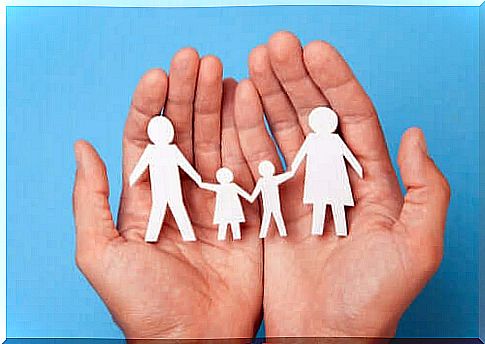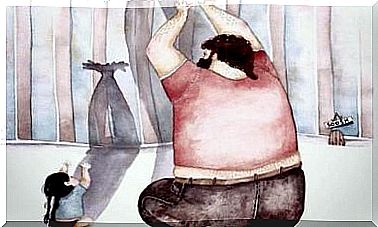Familiar Myths And Their Effects

Family myths are fictional beliefs and hopes shared by an entire family. These beliefs concern the family itself and the ties that unite it. They are assumed to be “truths” and determine the individual and collective behavior of that human group; they also determine the roles of each.
Most commonly, family myths are preconscious ; that is, they move on the boundary between the conscious and the unconscious. This means that the family admits to having certain beliefs, but is not sure how far they reach or why these ideas are considered valid.
Although family myths are defined as a fictitious belief, the truth is that behind them are often truths that are painful or intolerable for the family. Often the clues to these myths are found in the secret or implicit rules that each family group implements within itself.

The characteristics of family myths
One of the characteristics of family myths is that they are mainly based on the assignment of roles in the family. These beliefs define who is the “black sheep” or who is the “role model”, and so on. Most commonly, there is strong resistance to change in these roles; even, in some cases, this becomes a taboo subject.
Other features of these myths are as follows:
- They shape intra-family relationships.
- They represent the image the family has of itself.
- Any attempt to change beliefs results in strong resistance.
- They fulfill the role of covering up a reality that the family refuses to accept.
- They always have a background of truth.
- They are passed from generation to generation.
- They are present in all families, to a greater or lesser degree.
- They represent the way the family relates to the culture.
These myths are basically of three types: harmony, excuses/repair and salvation. We’ll see more details about each of them below.
Harmony myths
Harmony myths correspond to families that build a fanciful image of themselves. They develop a series of behaviors to convince themselves that balance, unity and brotherhood prevail among all their members. It is as if within this family group there are no problems.
In general, this type of family builds this image in relation to others. There is a guilt that is wanted to cover up and the idea of perfect harmony serves as a means for them not to be investigated or judged by others. There are usually cases of depression in these family groups, as well as strong unresolved hostilities.
Myths of Excuses and Redress
The apology and reparation myths are a little more complex, as they involve a deeper elaboration. In this case, what happens is that the responsibility for the misfortunes or family problems falls on one or more people. These people can be alive or dead. Sometimes, someone outside the family who is related to the family is also blamed.
The most obvious example is that of the “scapegoat”; whoever occupies this role is held responsible for what is not working well or for the problems that exist. This frees other family members from responsibilities. What operates in this case is, fundamentally, a projection mechanism; in this case, collective.

Family myths of salvation
When family myths of salvation are present, family members construct the figure of the “mythical savior”. It is a character who is expected to have a redemptive intervention, whether faced with a specific problem or difficulties in general. This savior is believed to have the power to provide what is needed or unlock what is not working.
The figure of the mythical savior can be incarnated in one of the family members, but it can also be someone external. It is very common for family groups to attribute this role to the psychologist when they are in the process of therapy.
The more pathological the family relationships, the more often these myths tend to appear and take root. These are the wrong ways to approach, but not address, problems that must be tackled at the root and corrected.








